|
An interesting photo shows members of the Civil Defence Corps (CDC) parading in Lune Street, Preston wearing wartime ARP Pattern 71 tunics. They are wearing the CDC badge on their berets. They may have been previous members of the Civil Defence Services who joined the CDC.
The date given by the Preston Digital Archive is c.1947 but it is probably the early 1950s. A battledress blouse was manufactured for female volunteers in the CDC but it was often remarked on as being highly unflattering. The vast majority of photos show the battledress being worn with a skirt and occasionally slacks. Image: Flickr - Preston Digital Archive
0 Comments
Following an air raid, casualties in bombed buildings could be trapped beneath the rubble. If they were able to make a tapping sound then the Rescue Squads could endeavour to find and extricate them. Heavy Rescue Squads would look to ensure the buildings had been rendered safe to enter (by shoring walls etc) and the Light Rescue would tunnel through to the casualties, carry them out and pass them onto the first aid posts or to a hospital.
To assist in locating buried casualties, a Sound Locating Apparatus was devised in early 1942 to assist the Rescue Squads. This consisted of a truck with a crew of three which would be called from its base located at Metropolitan Electric Supply Company in Uxbridge. Called out by a Borough’s ARP Controller, the truck would arrive at the incident and set up various listening devices at a bombed building. The operator would require all other rescue work to cease for at least 10 minutes as they listened for any noise. From records, it appears not every rescue team was happy to stop their work to allow this. The success of the Sound Locating Apparatus appears to have been quite limited. In some incidents, the locating apparatus could not be deployed for several reasons. In some cases, the Civil Defence rescue dogs had already suggested where a casualty had been buried (in one particular case, this turned out to be a buried cat). In quite a number of cases the results were negative, as no casualties were present. A Ministry of Home Security report in January 1945, commented that the Sound Locating Apparatus “…cannot be regarded as a valuable aid to rescue work.” Thanks go to Chris Ransted for the information. Vital to the war effort was the manufacture and use of various rubber products. Dunlop Rubber, one of Britain's largest multinational companies by 1939, was at the forefront of this effort. Fort Dunlop, in the Erdington district of Birmingham, was the location of the original tyre factory and the company's main office. Thousands of employees worked at the site.
Accordingly, the business organised a large-scale internal ARP system and a large number of ARP badges can be found featuring Dunlop. Various colours are found, which possibly relate to different functions within the ARP services: wardens, rescue, control, fire and first aid. To date, no definitive record has been located that answers which colour badge was attributed to which ARP service. The badges are quite small (smaller than a £1 coin) and are made in sterling silver. An identical design of the badge features "INDIA", a Scottish rubber company that Dunlop acquired in 1940. Thanks to Adam for the image. The Services Watch Company was a budget-priced watch supplier based in Leicester which supplied watches bearing a number of brand names. The watches contained no jewels or were part-jewelled pin-lever watches which precluded them from being offered to the armed services.
All the watches sold by Services were assembled on the continent, mainly it seems at German and Swiss factories. The watches retailed for 12 shillings and 6 pence (12/6). The dials feature “Foreign Made” as a result. The “Transport” models were made for Services from the mid-1930s, and initially marketed at truck drivers. The watches featured a larger than normal case, a strong luminous dial for visibility and were robust enough to be somewhat shockproof. Watches were supplied with two straps, one for wearing on the wrist and a longer one for wear over a glove or sleeve (see advert). The “Transport” watch faces incorporated various terms like “A.R.P.”, “Despatch Rider” and aeronautical terms as a marketing gimmick to drive sales. |
Please support this website's running costs and keep it advert free
Categories
All
Archives
June 2024
|
|
|
Copyright © 2018–2024
|
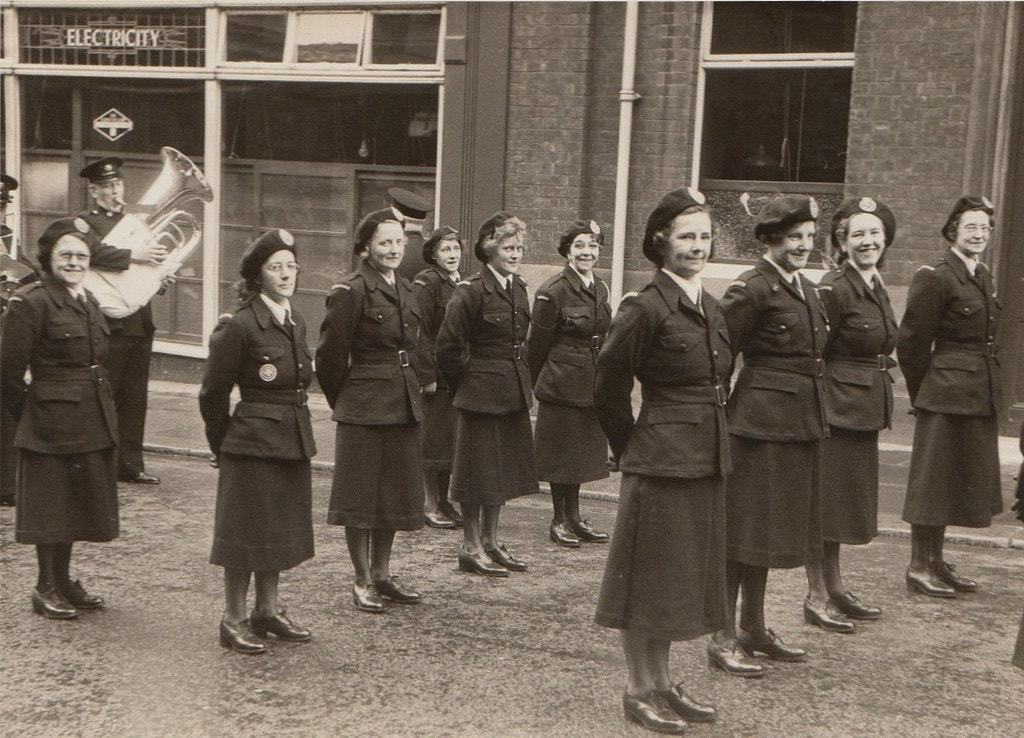
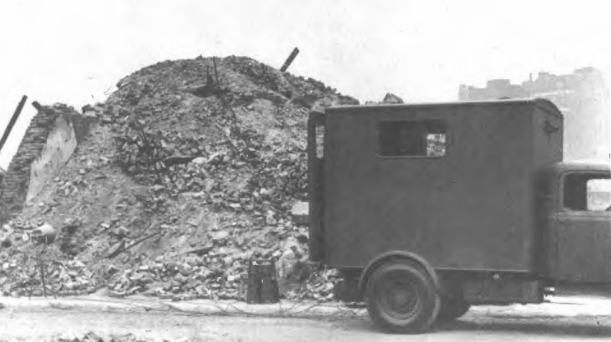
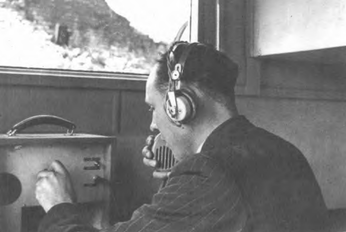
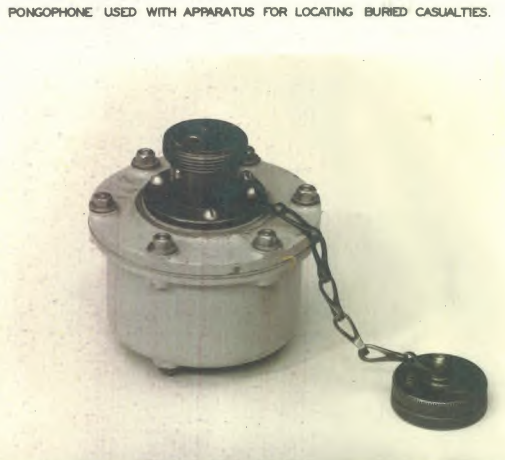
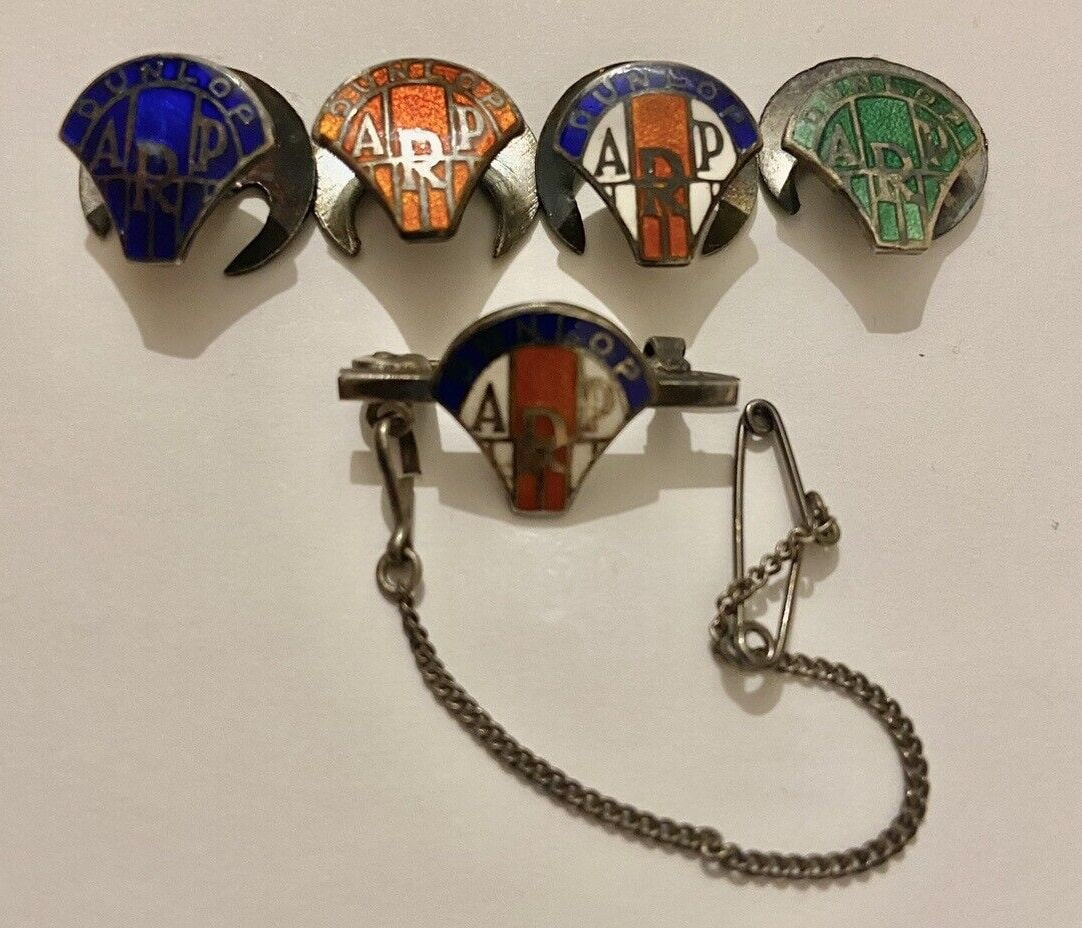
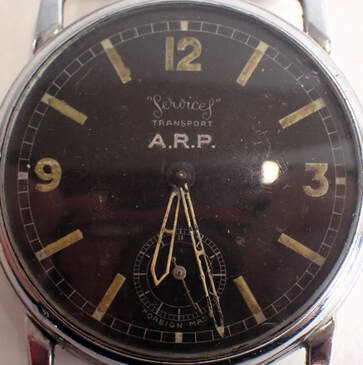
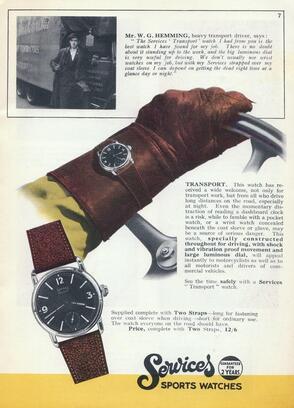
 RSS Feed
RSS Feed